
A frequently asked question about Grand Seiko’s watches is “how magnetically resistant are they?” Grand Seiko’s philosophy is to make the best practical watches possible. Though durability is something that can be overlooked with the caliber, robustness is extremely important to Grand Seiko and key to making practical timepieces. In order to have a practical and accurate watch, the movement must be durable. So if a watch is easily impaired by a magnetic field, then it is not considered durable. This is an important consideration for Grand Seiko.
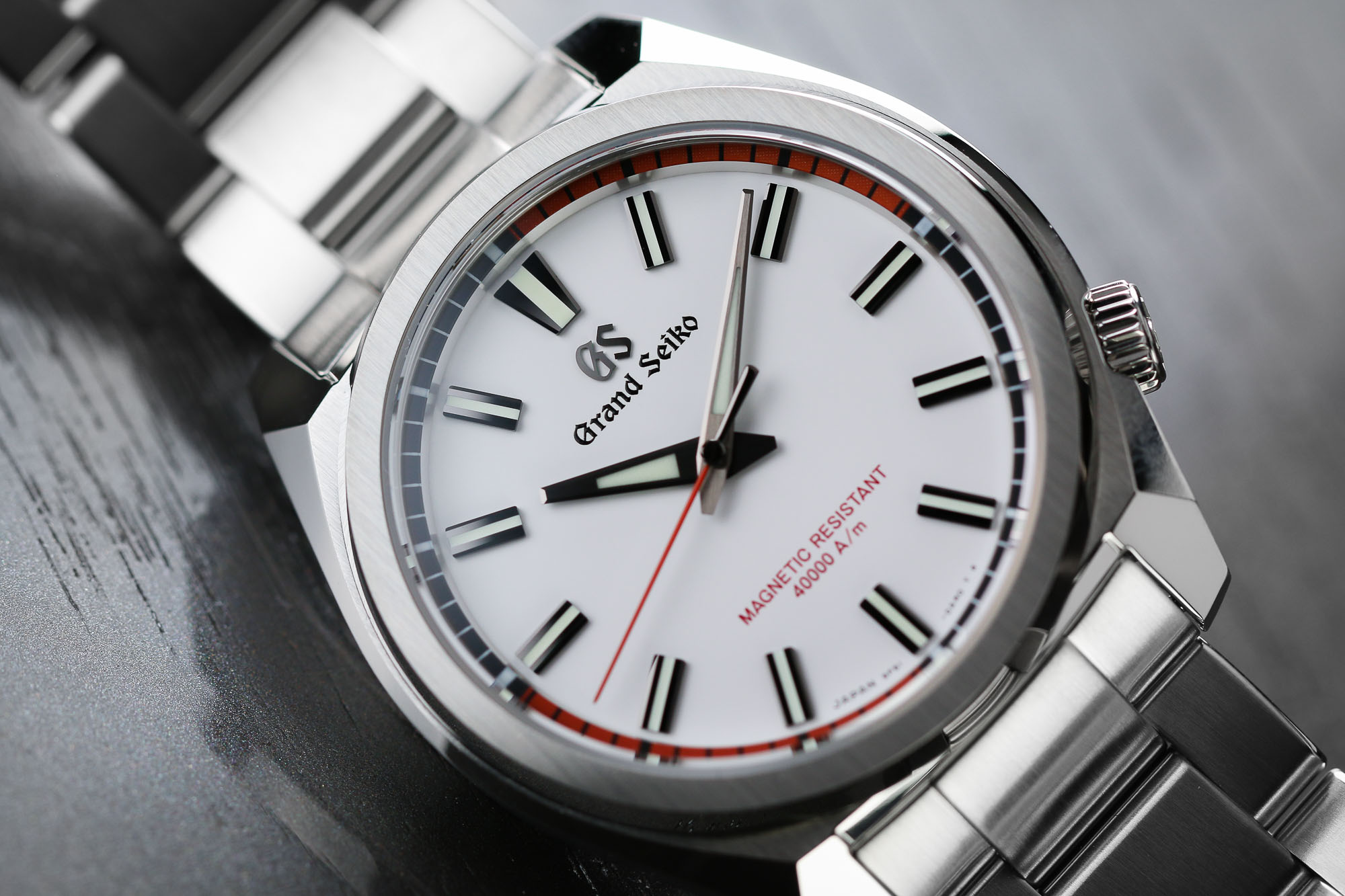
Different movement types have different reactions to strong fields of magnetism. A mechanical movement generally will have a lingering effect of the hairspring coils sticking together, which causes inaccuracy. For a quartz watch, the effect does not linger, but it could have an impact on the step motor, causing the timekeeping to cease or speed up while exposed. Generally, it will return back to normal operation after the magnetic field has been removed. Spring Drive reacts in a similar fashion.
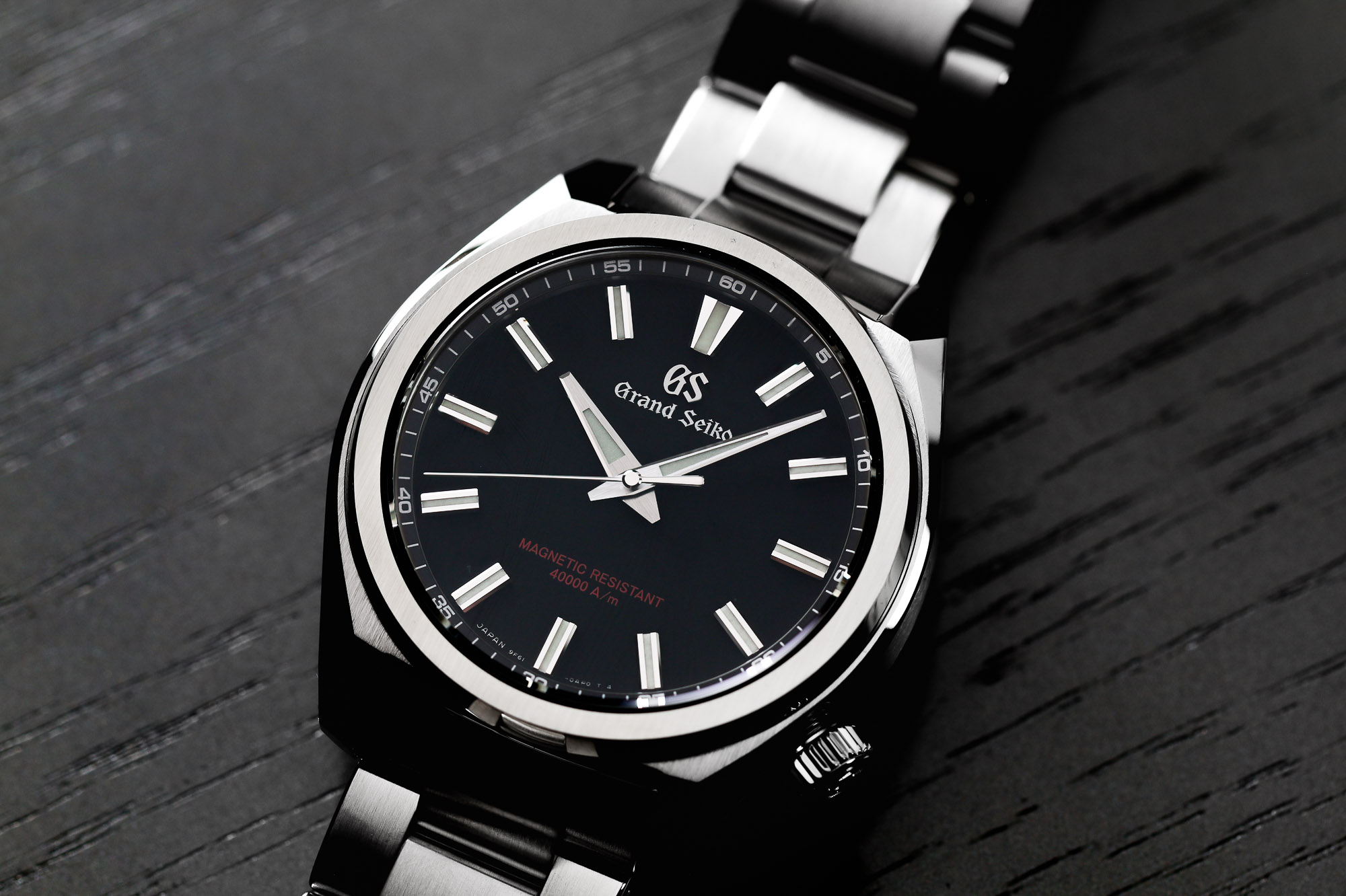
All Grand Seiko watches have a minimum magnetic resistance of 4,800 A/m, or about 60 Gauss. This minimum standard for Grand Seiko is the same magnetic resistance required by the ISO standard for a diver’s watch. Compliance with the same standard that is required for a rugged diver’s watch in the entire GS assortment is a testimony to Grand Seiko’s dedication to durability.
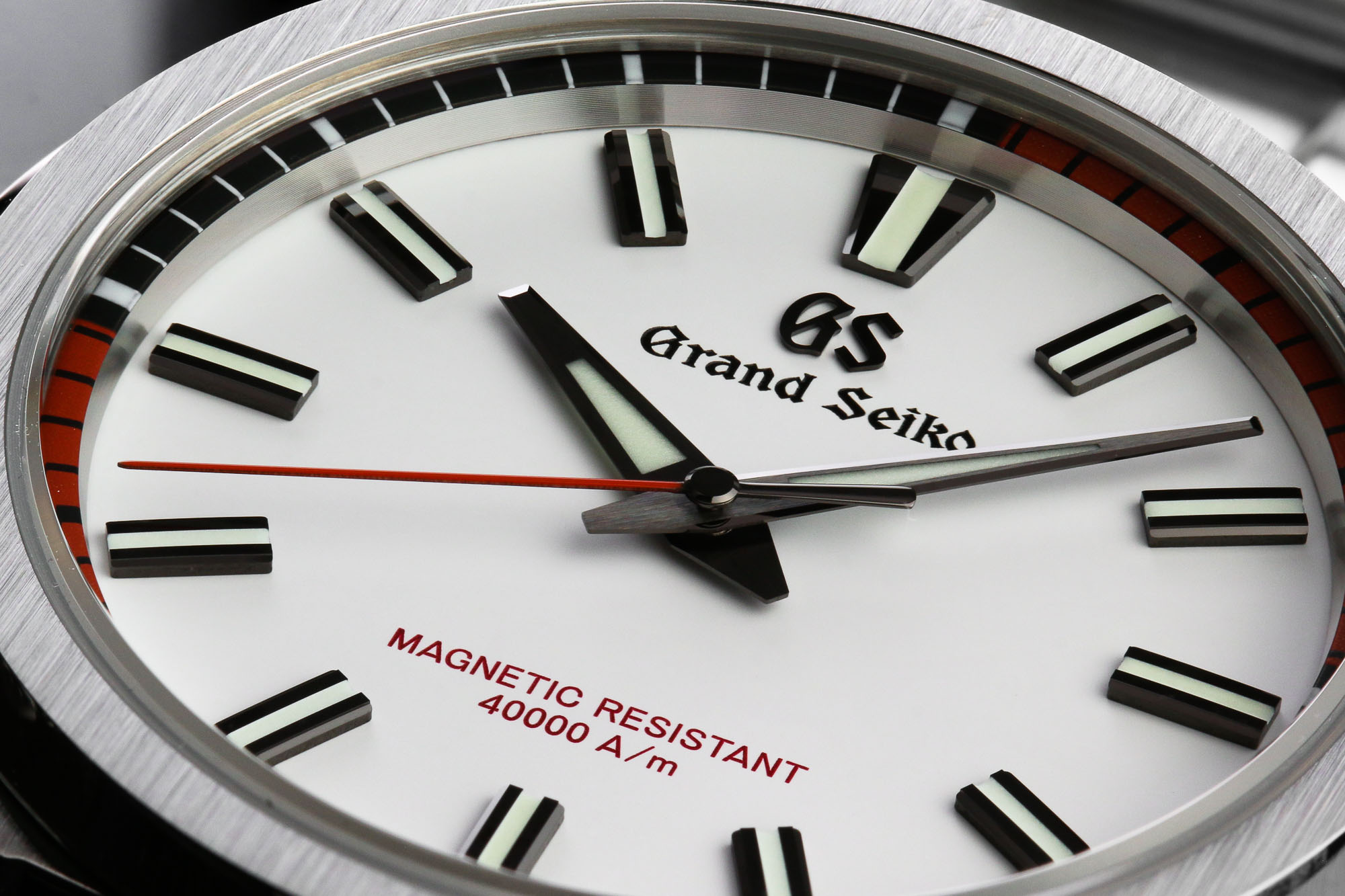
The search for improving magnetic resistance in Grand Seiko really starts in the development of the brand’s proprietary Spron spring alloys for mechanical watches. Current spring materials have an even higher magnetic resistance than the 4,800 A/m rating. Some models, such as the Hi-Beat 36000 Professional Diver 600m, use a dial made of pure iron to absorb magnetism and have a higher resistance rating of 16,000 A/m, or 200 gauss.
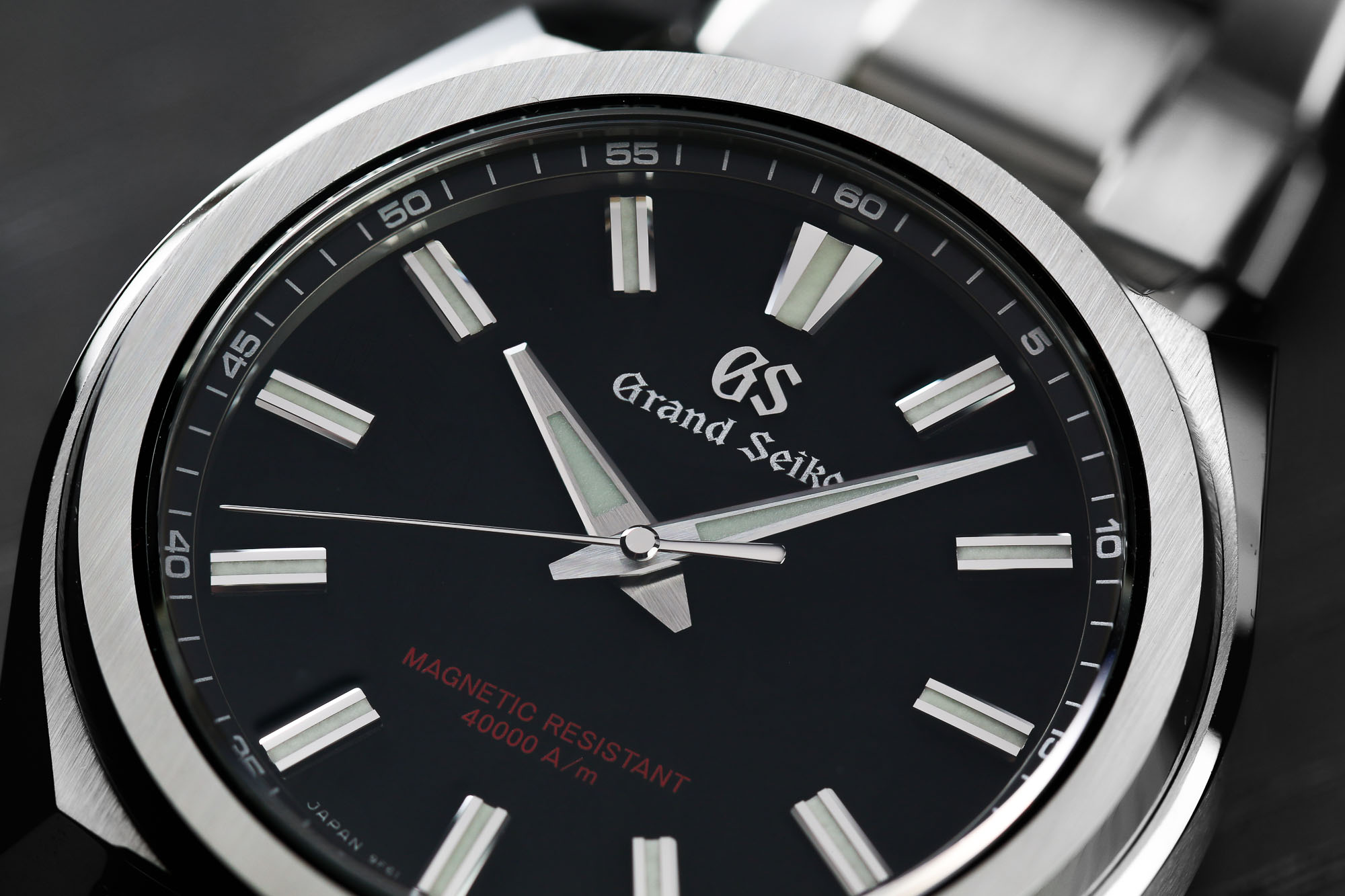
The hairspring in a mechanical Grand Seiko watch is resistant to roughly 10,000 A/m, or 125 gauss, higher than that of a strong kitchen magnet (though you still should not bring one close to your watch). One might think this component would only apply for a mechanical movement, but is that really the case?
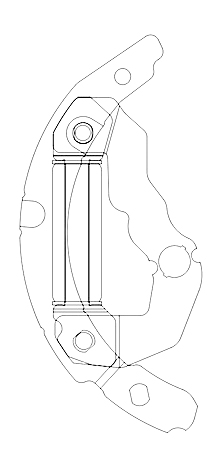
In quartz watchmaking, there is a permanent magnet with a pinion found in the step-motor known as a rotor (not to be confused with the oscillating weight in an automatic movement). This is the driving source of the motion of the hands and it jumps, generally, once per second. In Grand Seiko watches, the torque is closer to nearly double what one might find in a conventional quartz movement; this is necessary to drive the large heavy hands. It actually jumps twice, but you can’t really see the first jump since it occurs so quickly.
In order to protect the step motor and magnetic rotor from the effects of magnetism, there is a pure iron shield over the stator (the stationary part of the step motor) and rotor. This allows for the magnetic resistance of 4,800 A/m in all GS 9F quartz, and, in some instances, it goes as high as 16,000 A/m.
« All Grand Seiko watches have a minimal magnetic resistance of 4,800 A/m, or about 60 Gauss. This minimum standard for Grand Seiko is the same magnetic resistance required by the ISO standard for a diver’s watch. »
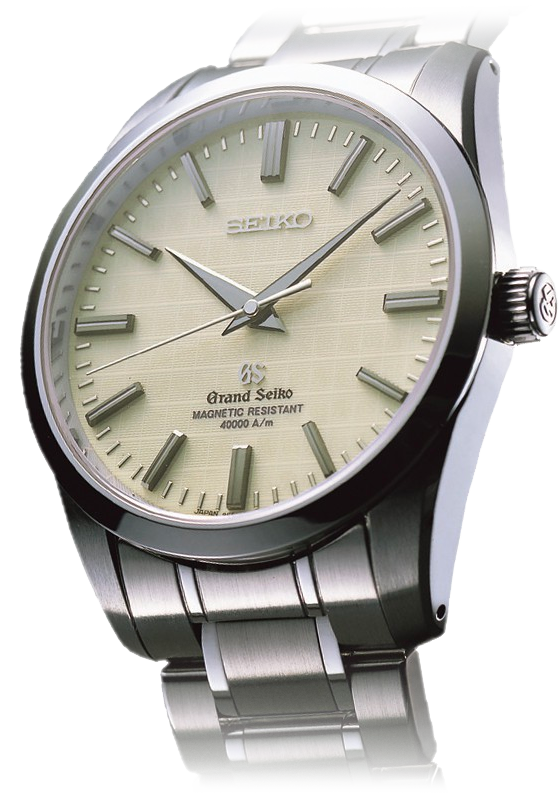
In 2003, Grand Seiko did something that was not really pursued heavily in watchmaking before. They strived to create a highly magnetic resistant quartz watch, releasing the SBGX039 as the first quartz Grand Seiko watch to reach a high magnetic resistance of 40,000 A/m, or about 500 gauss. This was a limited production model with a faint GS logo and GS Lion hidden in a grid pattern on the dial.
From there, other high magnetic resistant models were introduced in both quartz and mechanical forms (all are now discontinued). Recently, however, a new take on the anti-magnetic Grand Seiko 9F Quartz was launched quietly for the Japan Domestic Market (JDM), and some of these models have been allocated to the US market exclusively available through the three Grand Seiko Boutiques and the GS9 Club Shop.
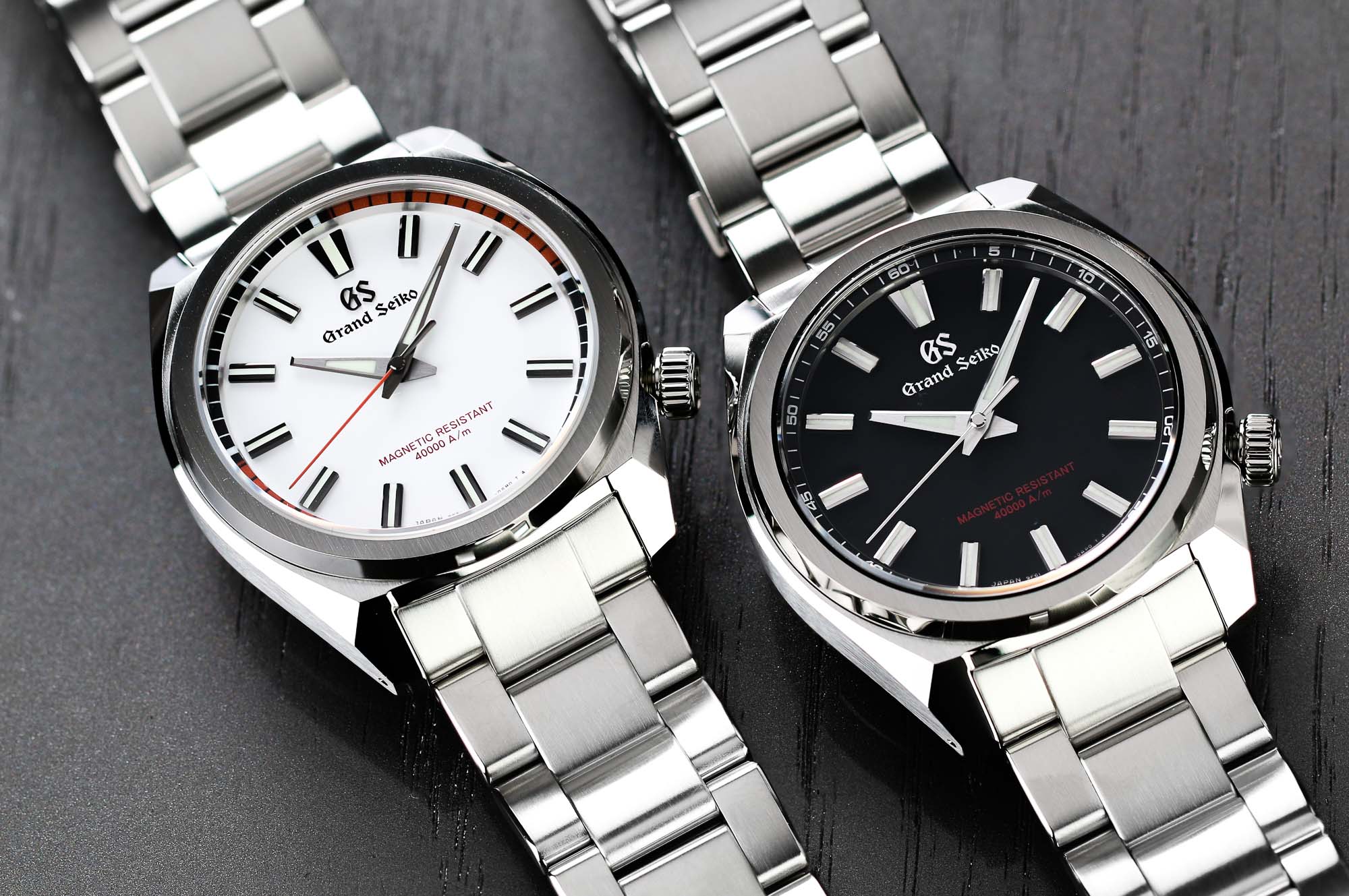
Models SBGX341 and SBGX343 are a take on the “Tough” design, similar to that of the Hi-Beat 36000 Professional Diver or the “Tough Quartz” design SBGV243 and SBGV245. However, improvements have been made over the previous designs, including a thinner profile, the crown at the four o’clock position, and, of course, increasing the magnetic resistance from 16,000 A/m to 40,000 A/m.
Aesthetically, these models feature design cues from Grand Seiko’s design philosophy known also as the “Grammar of Design,” yet there are also some notable departures from this foundation.
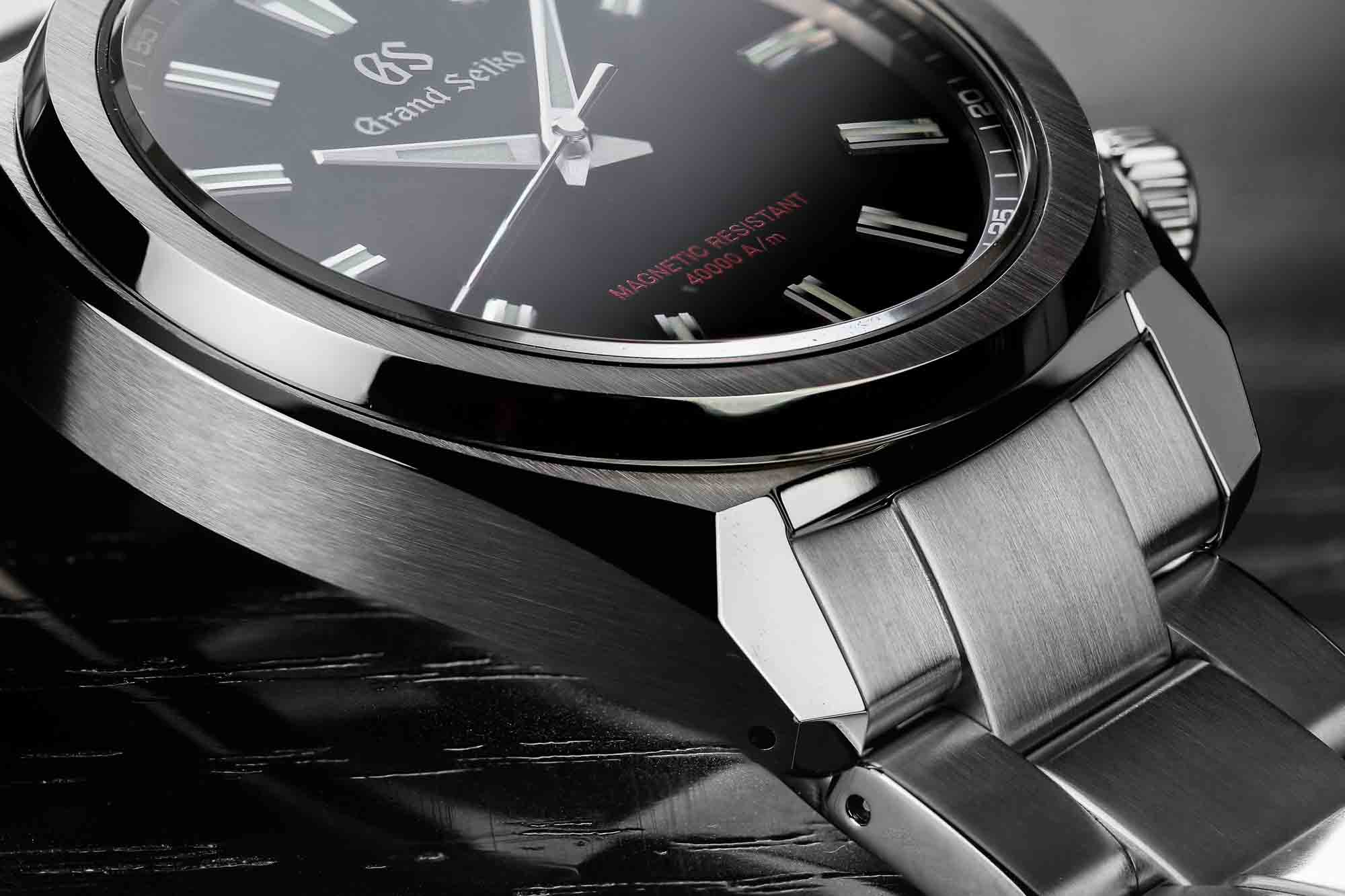
While the lugs have an incredibly flat, multi-faceted angle to them and are polished to a sharp and distortion-free mirror finish via the Zaratsu technique, the bezel does not actually follow a common trait found on nearly all Grand Seiko watches. The bezel is not mirror polished on the top surface but receives a delicate hairline finish instead. The bezel top surface is also not at an angle, but flat, with mirror polished sides that elevate straight up from the mid-case. While it may not seem like much, it is quite a departure from traditional Grand Seiko design.
The mid-case of both the SBGX341 and SBGX343 has also changed. While the inherent idea is the same, a new angular form to the case sides and lugs was adopted, further increasing the difficulty in Zaratsu polishing and creating a distinct but subtle difference to the discontinued SBGV243 and SBGV245 from previous years.

Being a part of the Sport Collection, the “Tough” design is made to be ultra-durable for everyday wear. Not only does it have high magnetic resistance, but at 200m instead of 100m it also has a higher water resistance than the average Grand Seiko timepiece. The crown position at four o’clock is not only designed for comfort, but durability as well, making it less likely to snag.

The proprietary luminous paint, known as Lumibrite, is utilized for the hour and minute hands as well as the hour markers. You may notice that the hour markers use two colors, with twelve, three, six, and nine o’clock glowing green, and the rest glowing blue. This is a first for Grand Seiko and helps improve overall legibility in darkness, even at a glance.

The SBGX341 utilizes a silvery white dial with black and orange contrasting elements on the chapter ring, inside the bezel. This design is a more sporty and fun interpretation with orange accents for the seconds hand and text at the six o’clock position.
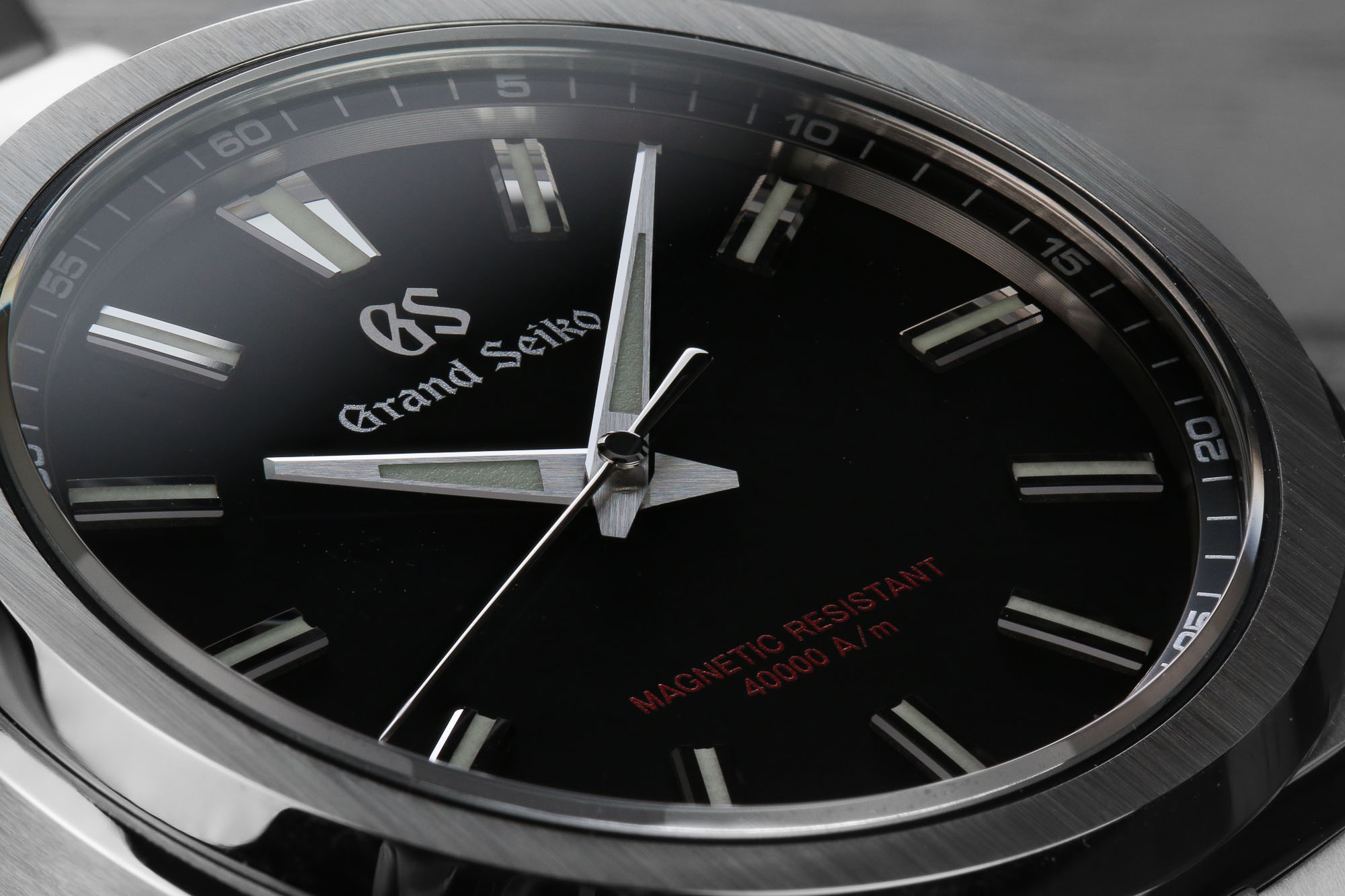
The SBGX343 is more neutral, truer to Grand Seiko’s philosophy of producing great every day watches. The matte black dial provides a high contrast to the mirror-finished hour markers and hairline-finished hands. The prominence of the red text at six o’clock helps add to the sporty feel of this model, while still being innocuous.
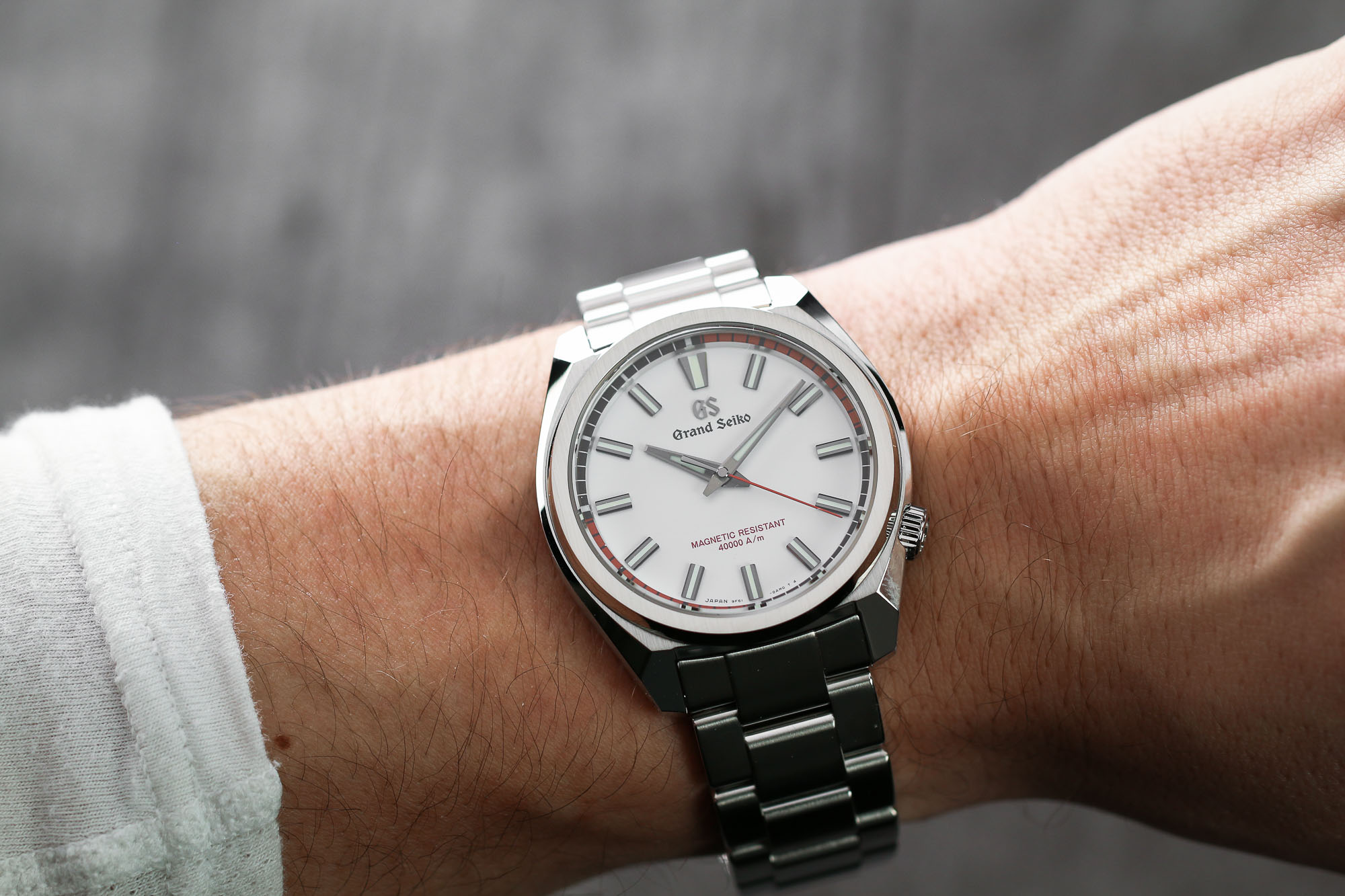
The 9F series of calibers was created to be the quartz that surpasses quartz. They are built with high precision, legibility, durability, longevity, and beauty in mind. The 9F61 no-date caliber used in SBGX341 and SBGX343 is incredibly precise at ± 10 seconds per year annual deviation. This is achieved by specially selecting and aging in-house-grown quartz crystals and paring them with ultra-low-power, in-house-developed temperature compensating integrated circuits that are each individually stored with each oscillator’s reaction to temperature. This is checked and compensated 540 times per day, or about every 160 seconds.
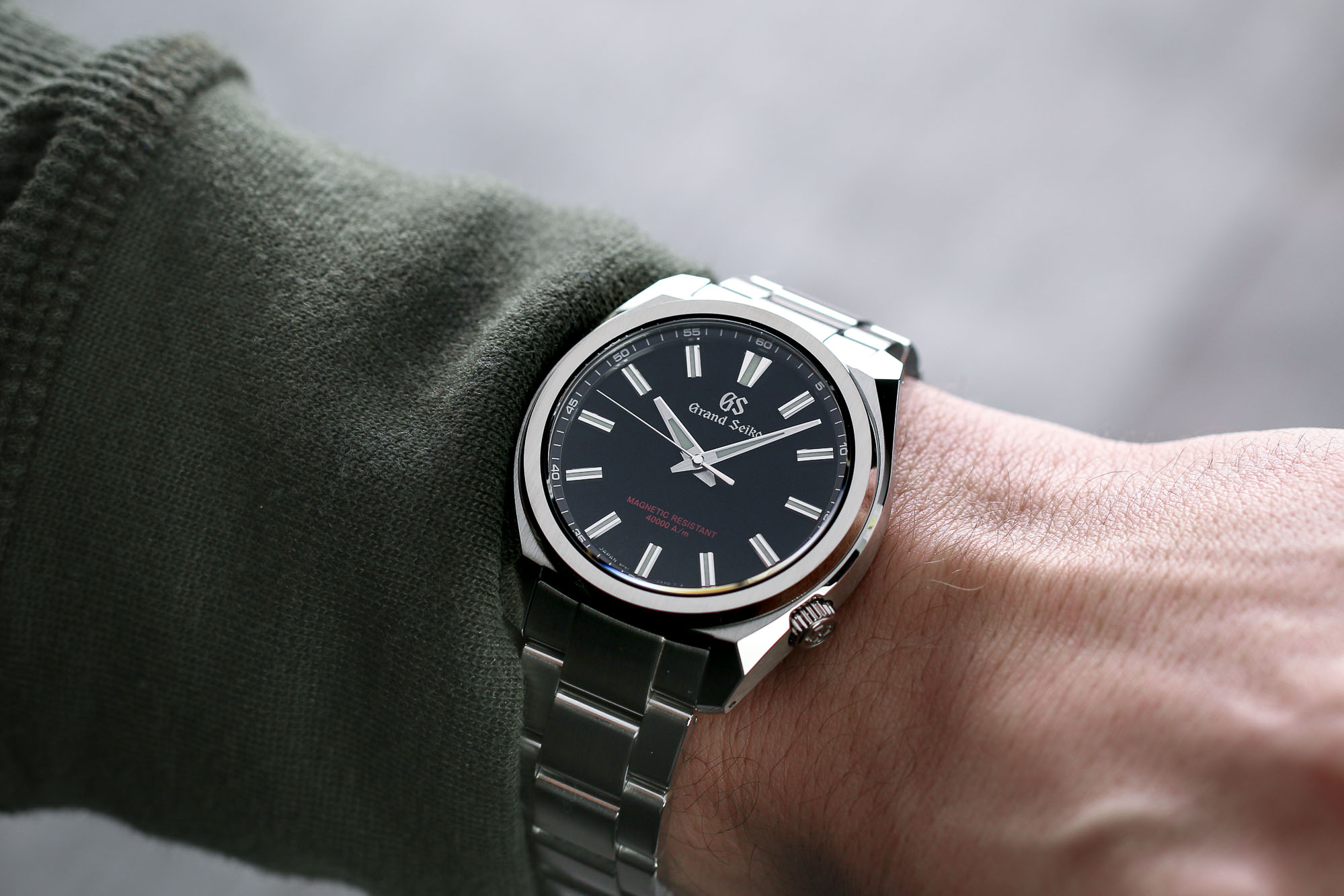
The durability and longevity of 9F is one of its best selling points. It is built with the longevity of a mechanical movement. It even uses thick bridges and a mainplate twice the normal thickness, and it is four times as durable as a conventional quartz movement. This helps enhance its rigidity. The other great added feature lies within its protective shield construction, allowing for retention of lubricant thanks to the Diafix spring and cap jewel system. The unique design of the bridge and mainplate structure also helps to prevent dust and contaminants from entering the gear train, an especially useful thing during battery changes.
As mentioned, large heavy hands are used in Grand Seiko quartz watches, which is only possible due to the Twin Pulse Control motor driving the hands with two pulses of energy per second versus the typical one. The second hand is made of metal and weighs about three times more than what you would find in other quartz watches.
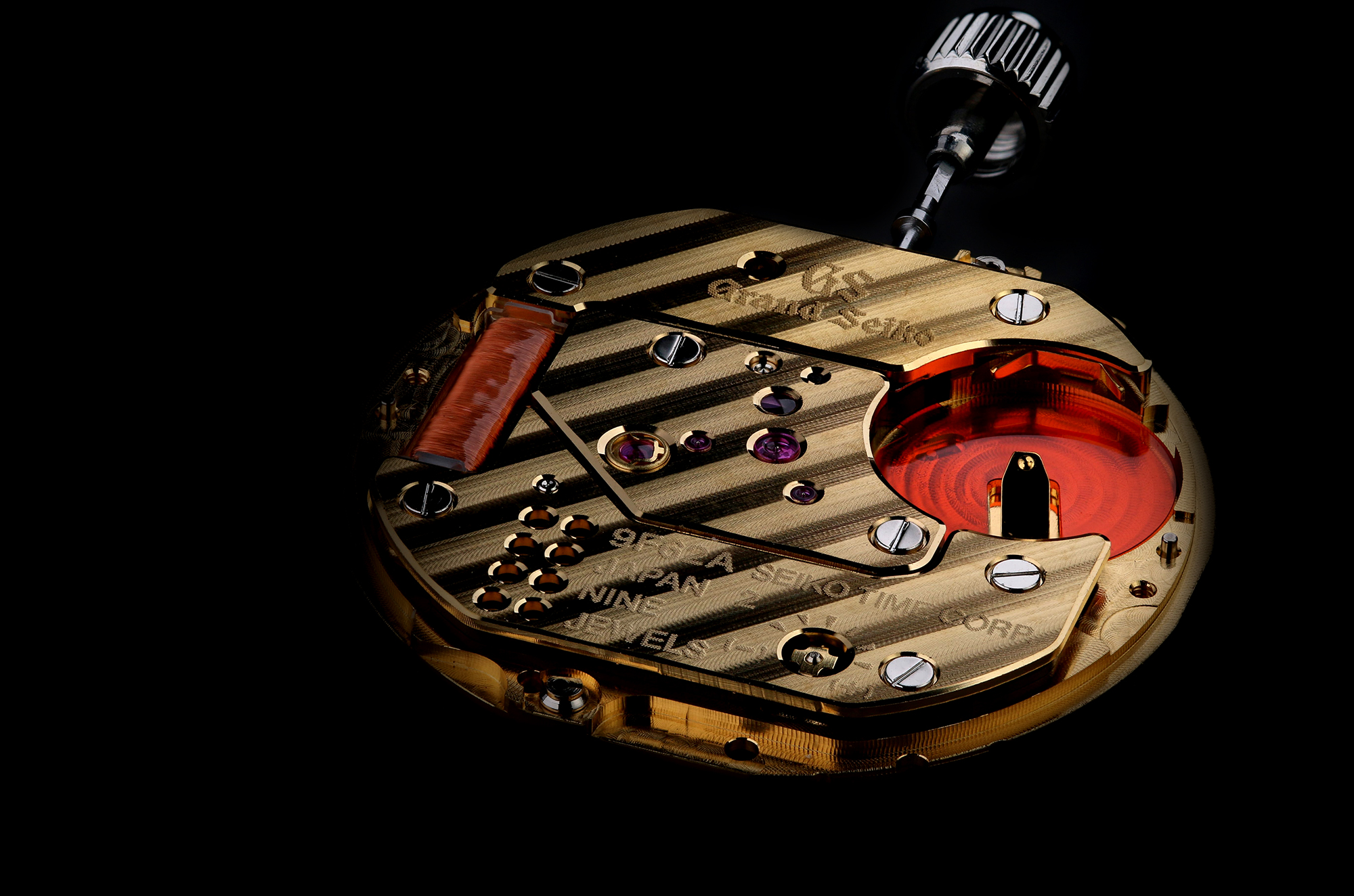
Because quartz watches generally experience backlash when the second hand jumps from one marker to the next, the engineers and designers behind 9F needed a solution to absorb the backlash so that the second hand would land on the marker precisely. This solution was found in the use of a hairspring. Typically only found in mechanical movements, a hairspring was applied to the end of the gear train of 9F to absorb the backlash so the hand lands assertively and precisely with no wobble. This mechanism is known as the Backlash Auto-Adjust Mechanism.
With an unrivaled number of features for a time-only quartz caliber, the 9F61 caliber, together with the SBGX341 as and SBGX343, offer unique styling, distinct performance, and a rugged “Tough” design to get you through the hardest of days.

The Grand Seiko “Tough” Quartz Anti-Magnetic SBGX341 and SBGX343 are available in the USA exclusively at Grand Boutiques and the GS9 Club shop for $3,700.